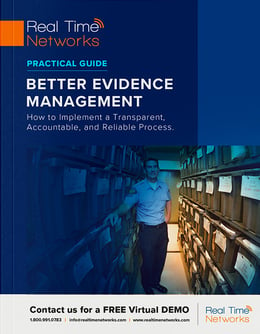By Jay Palter | December 13, 2022
Structuring your agency’s evidence management according to an established standard will help you more reliably see criminal cases to trial, increase conviction rates, and help exonerate innocent individuals. Real Time Networks recently published a new guide, Simple Strategies for Better Evidence Management, that draws from the work of the Evidence Management Institute (EMI) to reveal some of the most important standards law enforcement agencies of any size should follow to improve their evidence management practices.
Some of those standards include documenting roles and responsibilities for evidence custodians, sworn officers, evidence technicians, and all other stakeholders in the evidence management process. It also includes keeping detailed but transparent policies for evidence management to help ensure your chain of custody remains unbroken.
Read on for some of the highlights of that report, which also details the role smart technology can play in supporting your evidence management policies and standards.
The Purpose of Standards-based Evidence Management
Law enforcement agencies (LEA) are familiar with regulatory standards, but perhaps not regarding evidence management. The goal of applying standards in that area is to make how your agency handles evidence reliable, accountable, and transparent.
Evidence management standards should be organization-wide. Anyone interacting with evidence at any stage in the chain of custody could inadvertently hurt the chance of evidence making it to trial, convicting someone, or exonerating someone.
Even after the trial, there is still the matter of disposition. Many crimes are traumatic for victims and their families. Much law enforcement evidence could carry significant emotional weight for them, and they will want it returned.
Key benefits of standards-based evidence management
Developing standard practices for evidence management across agencies and between jurisdictions offers some specific benefits.
-
Reliability
Evidence management standards are designed to reduce variance. They detail reliable, repeatable processes that your personnel will carry out regardless of shift or investigative unit. You’ll know that evidence for every case receives the same attention. -
Improved performance
Standards generated by experts, like those at the EMI, guide LEAs toward the best practices they should follow for evidence management. They’re proven to improve case outcomes and benefit all stakeholders within the justice system, particularly in your agency’s evidence management workflow. -
Risk reduction
By reducing variance in how your personnel handles evidence, standards also reduce your LEA’s risk levels. In addition, standards establish a baseline performance level for all personnel to be held accountable. -
Sustainability
There is never enough storage space. One challenge every LEA, large and small, face is sustainably managing large volumes of physical and digital evidence. Standards-based evidence management improves your disposition processes as much as your retention ones.
5 Evidence Management Practices You Need to Standardize
A standard outlines the desired outcome you want to achieve with a given activity. For our discussion here, that activity is evidence management. How LEAs achieve those outcomes will vary from agency to agency.
So while each should have its own customized practices and policies to achieve those standards, there are some established best practices that each organization will want to consider. Five core best practices for evidence management include

Document everything, including your documentation
Documentation lies at the core of standards-based evidence management. Transparency, accountability, and consistency—none of these principles work without common reference documents that stakeholders can point to to understand your LEA’s evidence management processes.
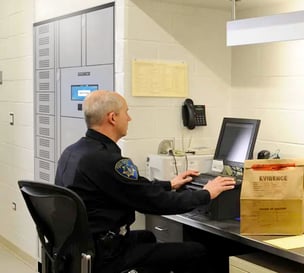
Defining clear roles and responsibilities for custodians, evidence technicians, and others
Create clearly defined roles and responsibilities for every stakeholder interacting with evidence from collection through disposition. Define the role of evidence custodian—the individual within your LEA who will carry final responsibility for the care and handling of all evidence. At a high level, this individual is responsible for protecting the integrity of evidence in your custody, facilitating access to evidence for investigations, discovery, and trials, and arranging for its disposition.
While evidence custodians take responsibility for the end-to-end process, it would be impossible for them to manage the day-to-day transactions of every single piece of evidence in your agency’s custody. Typically, those day-to-day management responsibilities will fall to sworn officers, technicians, and evidence analysts. Outline their specific duties at each point in your internal evidence management process.

Establishing a rigorous and consistent evidence intake process
Your agency’s first interactions with evidence are some of its most important. Evidence tracking begins the moment your personnel first interact with evidence, that’s the first link in the chain of custody. Establish clear processes for how your personnel should document, package, and submit the evidence they collect. At most agencies, this duty is most effectively performed by officers. Ensure that your role and responsibilities for them include these critical collection steps.

Maintaining necessary storage
Every LEA struggles with evidence storage. Space is obviously the greatest limiting factor in how much evidence you can store. Evaluate your existing intake and storage systems to see if there are inefficiencies you can remove. For example, are shelves spaced too tall or too short for your containers, creating dead space where you can’t stack anything? Are your police evidence lockers not easily accessible?
But space is not the only limiting factor. Your storage facility is at the center of your evidence management workflows. Your policies and processes also significantly impact how often and how long you retain evidence. So also evaluate your existing retention and disposition policies.
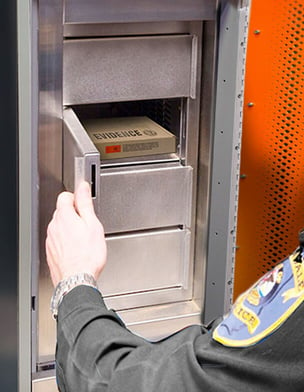
Establishing a rigorous and consistent evidence disposition process
Finally, ensure you have a reliable, consistent process in place for evidence disposition. You want to retain evidence as long as necessary and not a moment longer. The key, therefore, is knowing with 100 percent certainty when evidence has reached the end of its life cycle within your organization.
As suggested by the EMI, your agency’s evidence disposition process should be based on four factors: “required retention, case adjudication, the time of appeals – or the sentence of the offender if they are incarcerated – and certain limitation statutes.”
The Importance of Technology in Standardizing Management Practices to Improve Evidence Chain of Custody
The best practices we’ve highlighted here help you conduct high-quality evidence management more consistently and reliably. In addition, hardware and software technology can support your standards-based practices even more effectively.
Automate to improve reliability and consistency 24/7
Evidence management technology also helps automate time-consuming workflows and performs them without human error. Airtight transaction logging helps you maintain a complete evidence chain of custody, which keeps evidence defensible in court. Centralizing this activity also automates some of the more tedious and error-prone tasks in evidence management.
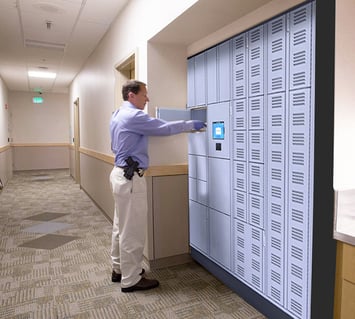
Manage evidence workflows with more efficiency
Staffing levels are already cut as close as they can be. Shifting some of the burdens of evidence management to smart systems frees up evidence custodians and other involved personnel for more important law enforcement activities.
And good evidence management takes time, as it can be a complex, rigorous process. So if there are any tasks you can streamline without compromising the integrity of your evidence, you should.
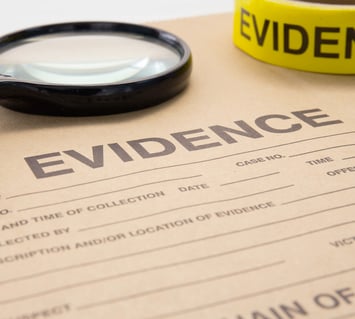
Integrate technology to streamline operations
Evidence management technology needs to integrate with the other access control systems you already have. Maintaining separate user records is inefficient and too prone to errors. Instead, centralize your access control systems to manage user and evidence stakeholders from a single record system where possible.
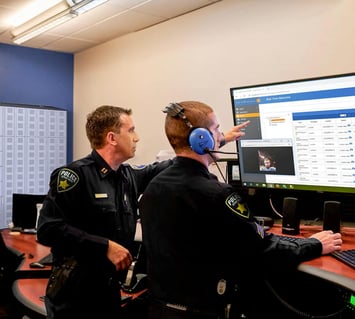
Enforce stakeholder accountability
Having the country's most rigorous evidence management policies does you no good if you have no mechanism to enforce their use. If staff ignore those policies, take shortcuts, or play fast and loose with your chain of custody, your legal outcomes will suffer. Making all evidence stakeholders accountable for their performance helps ensure a proper chain of custody.
Ensure You Can Manage Biological Evidence
Beyond routine physical evidence, law enforcement agencies everywhere now must have the capacity to hold biological evidence like SANE kits and DNA samples. Properly managing evidence can help to prevent contamination and preserve the chain of custody, which is important for ensuring the admissibility of the evidence in court. Ensure whichever evidence management solution your agency adopts has the capacity to store and track all kinds of biological samples.
Work with a Trusted Smart Locker Provider
Smart technology, including secure evidence lockers, can transform law enforcement operations. But it takes a little planning to get the most from them within a standards-based evidence management program. Working with a trusted smart technology provider can make the job simpler.
AssetTracer smart lockers can work effectively as permanent storage, temporary storage, or pass-through lockers. Real Time Networks’ team of experts has decades of combined experience designing and deploying smart locker systems for various industries and use cases.
Simple Strategies for Better Evidence Management
Help your agency more reliably see criminal cases to trial, increase conviction rates, and help exonerate innocent individuals
Subscribe to our blog

Jay Palter
Vice President of Marketing & Partnerships
